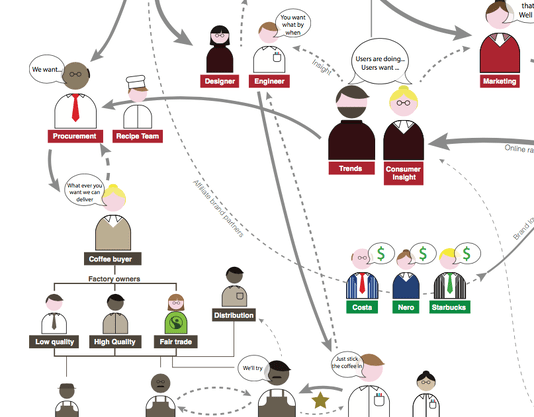In another article, we looked at why innovation can be a dirty word for businesses. Doing something new involves high levels of risk and the impact is not always easy to measure. But most people accept that to succeed they need to embrace innovation technology in one way or another.
So how do you manage the risks associated with product design innovation, services, policies, spaces, infrastructure and so on? There is a growing understanding that an approach called Human-Centred Design (HCD) is extremely effective in navigating the maze of innovation and design.
What is Human-Centred Design and its Relation to Product Innovation?
HCD is the discipline of generating solutions through the act of making something new, where the activity is driven by the needs, desires and context of the people we are designing for.
It goes beyond what people commonly refer to as user-centred or patient-centred product design because it considers a wider range of stakeholders who are impacted by the design. For example, if you wanted to innovate in the area of railway ticket dispensing machines, you would consider the traveller (in as many different forms as possible), the ticket machine vendor, the maintenance staff, the station cleaning team, the consumables provider and so on.
How Does Human-Centred Design Impact Product Innovation?
In addition to understanding the landscape of people involved with the product design or system, it is vital to gain insights into the behaviours of these people to understand how that could impact the design. HCD advocates using a variety or forms of gaining insights including observational research. This is one of our favourites at The Imagination Factory because as Margaret Meads said "What people say, what people do and what people say they do are entirely different things". Observational research enables us to ask people questions about a particular problem area whilst observing how they behave.
As an innovation design consultancy, we saw the benefit of this kind of approach to product innovation, when we were designing the PuzzlePhone. As a modular mobile phone, the PuzzlePhone represents a new paradigm for people who are used to more traditional smartphones. So we created a set of models and asked people to perform various tasks with them while we observed. It's amazing how often someone will say that they are finding a certain action easy whilst clearly struggling because the product design is not right. It's not that people deliberately lie but in a social situation, they tend to want to tell you what they think is the right answer.
Human-Centred Design and Innovation Technology: The Luma Institute
A good HCD approach will also include activities for analysing the data gained through research to produce valuable insights that can then form the backbone of creative problem-solving sessions. We use the toolkit devised by The Luma Institute because they provided our original training and passed on their infectious passion for developing the mindset required for HCD. The Luma toolkit also has a wealth of techniques to help people generate innovative ideas for solving problems, which is often the point where people get stuck.
But HCD goes far beyond just producing some new conceptual ideas. It advocates an iterative development process to positively impact product innovation where ideas are tested early and often with end-users. This reduces the risk of getting too far down the line without spotting a showstopper. Bumps in the road are discovered through interaction with real people before the costs begin to escalate.
In another article, we will get under the hood of how HCD works and how you can learn the skills to apply it to innovation and design.
By Mark Hester


